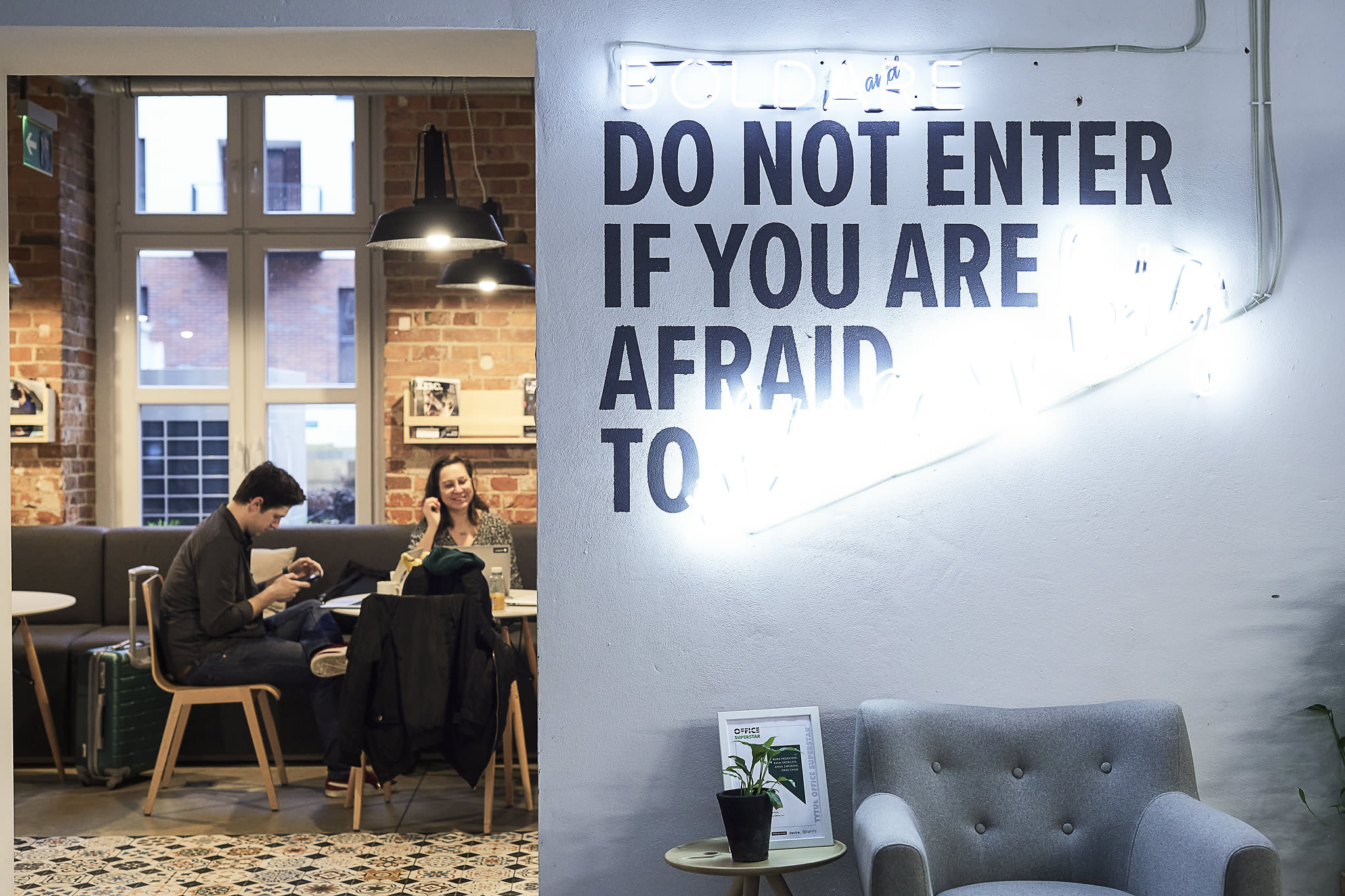How can radical transparency improve your business?
Working remotely has undoubtedly saved many businesses over the last months. For some companies, it was their core survival tactic when the coronavirus pandemic hit. But working remotely can also have some drawbacks, especially for those involved in digital product development, and can lead to decreased efficiency. What’s the solution? For us, it’s the radical transparency we have practiced for a long time. Read on to see how your organization can benefit from it as well.

Table of contents
A key decision facing the leaders of any company is how much information to share internally. What are you going to tell your workforce about company strategy, performance, financial results, etc. On a spectrum between the absolute minimum and everything, the answer usually lies somewhere in the middle.
But there is a growing school of business thought that says real business efficiency, from top to bottom, relies on sharing everything: a policy of radical transparency. At Boldare, we’ve practiced radical transparency for many years now.
Not only can we say it works, but when the pandemic arrived, our radical transparency was a key factor in our seamless shift to 100% remote working, without a drop in efficiency or team performance.
What is radical transparency in business?
The radical transparency definition is a cocktail of honesty and openness. It’s telling your employees the good news and the bad news. It’s not trying to hide anything. It’s refraining from putting a political spin on company news. It’s trusting your employees to handle information. It’s telling it how it is.
On a personal level, transparency can be translated as, sharing what you’re thinking.
On a company level, radical transparency is sharing what’s really going on.
That requires courage, good communication skills, and a willingness to then engage in the conversations, discussions and debates that will inevitably result.
Why do it? Because it builds trust, loyalty, engagement, and a wider cultural thread of open and honest communication that runs through the whole business - thinking, decision-making, and action.
Where does radical transparency in business as a strategy come from? It was first popularized by Ray Dalio, founder of Bridgewater Associates (the world’s biggest hedge fund, worth $160 billion).
“I want independent thinkers who are going to disagree…, meaningful work and meaningful relationships. And I believe that the way to get those is through radical truth and radical transparency.”
Ray Dalio
In its purest form, a radically transparent company has no secrets. All information is available to all employees, at all levels, regardless of individual role, responsibility, or remuneration. Radical transparency means the largest number of ideas, opinions, and perspectives within a company are available as a matter of course, allowing the best to be used to create success.
The benefits of radical transparency
Radical transparency is, well, ‘radical’ and before you introduce such a ground-shaking change in the way your company operates, you want to be sure of the pay-off, right? The biggest benefit is arguably a quantum leap in mutual trust and loyalty between the organization and the workforce.
- Everybody knows what everyone else is doing – This includes a basic awareness of what the different responsibilities and duties are throughout the company. There are no more ambiguous job titles, if you want to know what someone is contributing, you can find out.
- Whatever state the business is in, everybody knows – If the company is facing difficulties, the workforce knows, along with what is being done to surmount those difficulties, including how they can help.
- The company’s direction is no secret – Goals, objectives, and strategies, all are an open book, focusing the whole workforce on achieving them.
- Likewise, finances are open, often including individual salaries – Employees are aware of the company’s financial standing, the risks it’s facing, and the goals it’s striving toward. To be honest, this can be scary. But, a) it’s a strong incentive to ensure your remuneration package is fair; and b) there’s a pressure on everyone to ‘show your worth’
Scary stuff. Especially the financials!
Modern businesses are so used to keeping much of this information secret that just the thought of being more open is frightening. Every employee has access to data normally restricted to senior executives and shareholders. Of course, looked at from another perspective, every employee is a stakeholder in the company, and excluding them from the ‘inner circle’ of those in the know also excludes them from giving their best efforts. Inclusion, on the other hand, means there is no inner circle, just one big circle, all focused on the same goal: the company’s performance.
More specifically:
- Employees will have full access to company information and learn faster (and know how to apply their learning in ways that will directly benefit the business). Radical transparency brings everyone into the decision-making process – input from all. The result is better, more nuanced decisions. And a steadily building foundation of trust between employer and employee.
- For the company’s clients and customers, radical transparency is also apparent as a value. Project estimates are detailed and clearly described: the client knows exactly what they’re paying for and can trust that there are no surprises or shady ‘additional expenses’ further down the line. Similarly, the client (in the form of the project’s Product Owner) has open access to all project information, and to every member of the team – no project managers or gatekeepers here.
What’s more, radical transparency in the workplace encourages knowledge transfer which is a significant bonus for a client looking to develop its own workforce’s expertise.
Great as all that is (and it is!) radical transparency is a powerful tool and sometimes requires careful use. There are risks for a company that implements radical transparency without ensuring the workforce understands the drivers and benefits behind it.
- Too much debate – More input and perspectives can benefit your decision-making. The flipside is that every decision becomes a lengthy debate instead.
- People feel exposed – Often, people are brave when no one’s looking, happier to try out innovative ideas if the chance of failure isn’t so public. And this is where some level of psychological safety is required.
- For some companies, some information shouldn’t be shared – For example, if you know that your salary structure is inequitable, maybe you should fix that first (it won’t stop people knowing that it was a problem but at least when you make your finances transparent, that problem is in the past). Likewise, there may be sensitive information that the company cannot legally release. Radical transparency is best carried out within the law!
How to implement radical transparency in your organization
One word: carefully. While it can bring many benefits into your company, it has to be introduced to the life of your co-workers and employees carefully and cautiously:
- It’s not a question of speed. If your company seems ready for radical transparency, you can introduce it rapidly. The first question is, are you ready to be radical? Ask yourself, what are the levels of trust like at the moment? Do you have a culture of open and honest communication, or are your employees and teams sniping behind each other’s backs? Do you share information or do you gossip? These are issues to address before attempting a policy of radical transparency.
- Do as you would be done by. Or to put it another way, be a role model and show employees how radical transparency can work. What does this look like? Maybe a manager asking their teams for feedback on how they’re managed. Maybe the C-Level admitting some of the problems faced by the company, laying out a broad strategy, and then inviting everyone to offer input and ideas. Maybe an employee who has done exceptional work is openly given credit for the results.
- Decide your limits to start with. Yes, in its pure form, radical transparency might be all information available to everyone, but as you’ve read above, there may be practical limits such as legal compliance, or realizing that the company is ready for full-on transparency yet. If this is the position you’re in, rather than focus on the things you can’t share, how about the things you can?
- Ensure that employees can understand (and use) the information you’re sharing. Not everyone is used to thinking about their work in terms of global objectives and top-level performance indicators. Don’t just give people information, tell them what it means – otherwise, how are they going to appreciate its value?
- Don’t rush, take it steady. Depending on how open the company is to start with, phase in the transparency bit by bit; maybe start with sharing your high-level company metrics, give all employees access to management dashboards, include regular briefings on company matters in team meetings. Make the minutes/action points of all meetings available to all. If you’re a larger organization, introduce a structured feedback system that brings staff feedback to the C-suite. The bigger the culture change radical transparency is, the gentler the introduction.
How do we practice radical transparency?
At Boldare, we use radical transparency on many levels and with the help of popular tools, like Slack.
- We keep our communication almost entirely on open Slack channels*.* This means that everyone within the organization can open any channel and see the whole communication regarding the project’s details or team’s life.
- We don’t use private messaging - obviously it’s not forbidden, but we encourage everyone to communicate on open channels. This way everyone can get involved in the discussion, solve problems, and get answers to questions faster.
- Everyone can join any channel on Slack to seek information or share his or her knowledge (which is highly appreciated!).
- We use the same approach communicating with our partners - every stakeholder has access to the Slack channel dedicated to their digital product and can engage with the team anytime.
- Every week on Mondays, our Slack bot shares Boldare’s current financial information and forecasts, updates regarding our hiring efforts, and reports from the sales team about our sales funnel status.
- Each month our financial circle (team) publishes a detailed report regarding last month.
- We keep all the work, processes, and information regarding each team on an open Confluence platform.
Ok, but what about the limitations? Do we have some? Yes, of course!
- Our partners’ data are opened only by dedicated people that are involved in those particular processes. This is regulated by a non-disclosure agreement (NDA).
- Information regarding exact salaries of colleagues is confidential, although their broad range of remuneration, based on position and level of seniority, is available publicly.
- We also respect the personal right to keep some information confidential - nothing will be shared publicly without permission.
Radical transparency works!
Here at Boldare, as a leading supplier of digital product design and development services, radical transparency has long been a key element of the way we run our projects. For example, when a client has a question, they go straight to the person with an answer, no need for project managers or gatekeepers and – this is the transparent bit – they know who that person is. It’s a way of working that fits well with agile approaches, such as scrum, enabling greater individual responsibility, a committed workforce, and excellent client relations.
To return to the current pandemic-ridden, VUCA business environment, we can say without doubt that our radical transparency in business has prepared all our people for seamless remote working, maintaining our track record of delivery whether we’re all in the same room or not.
Share this article:











